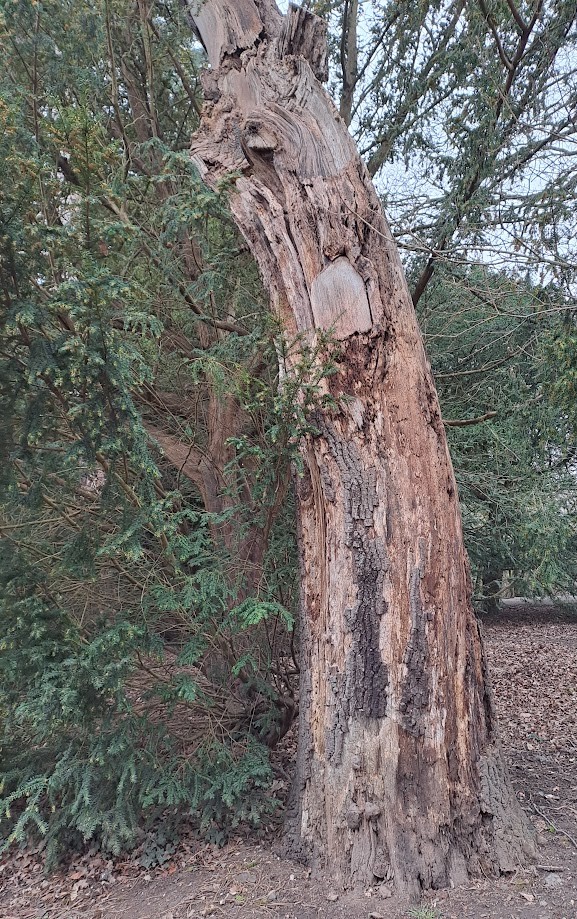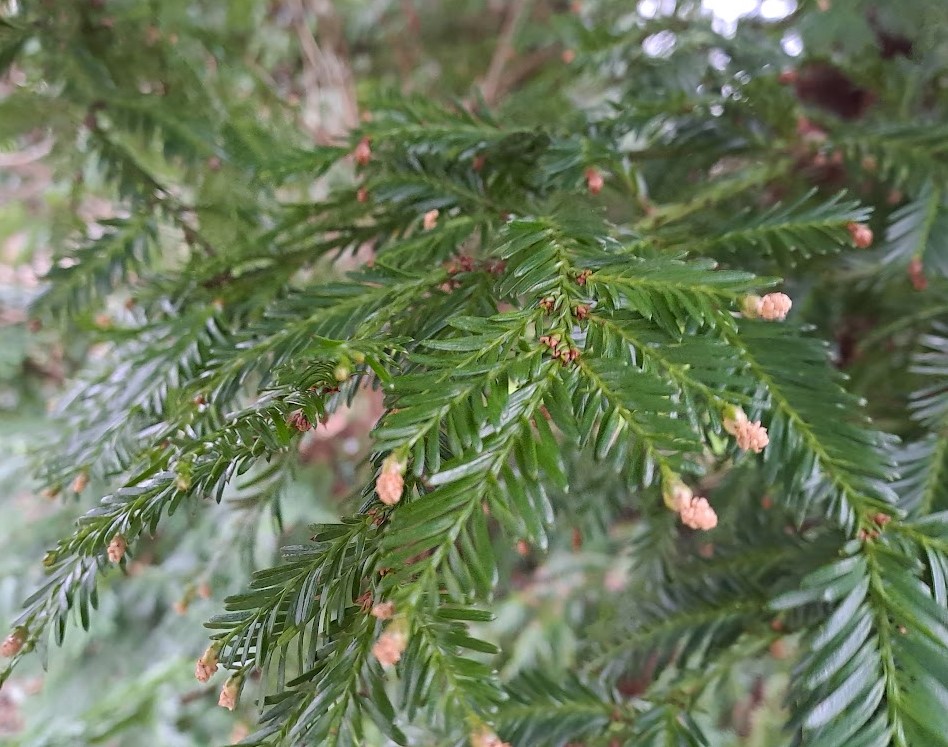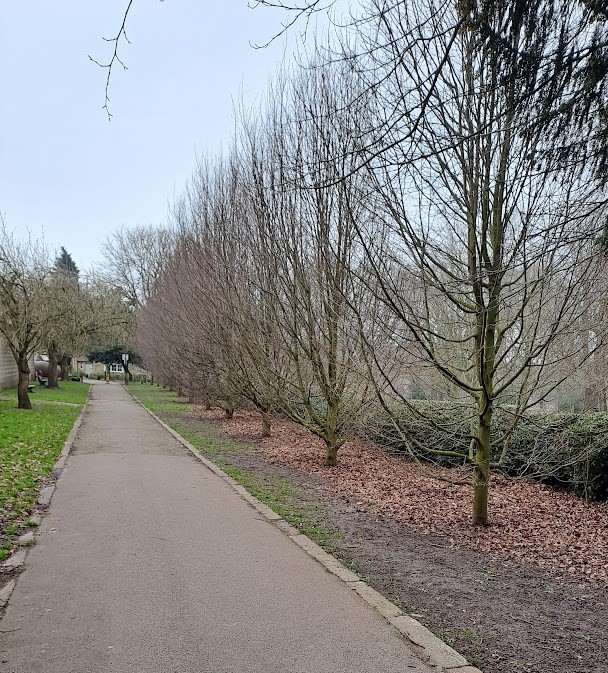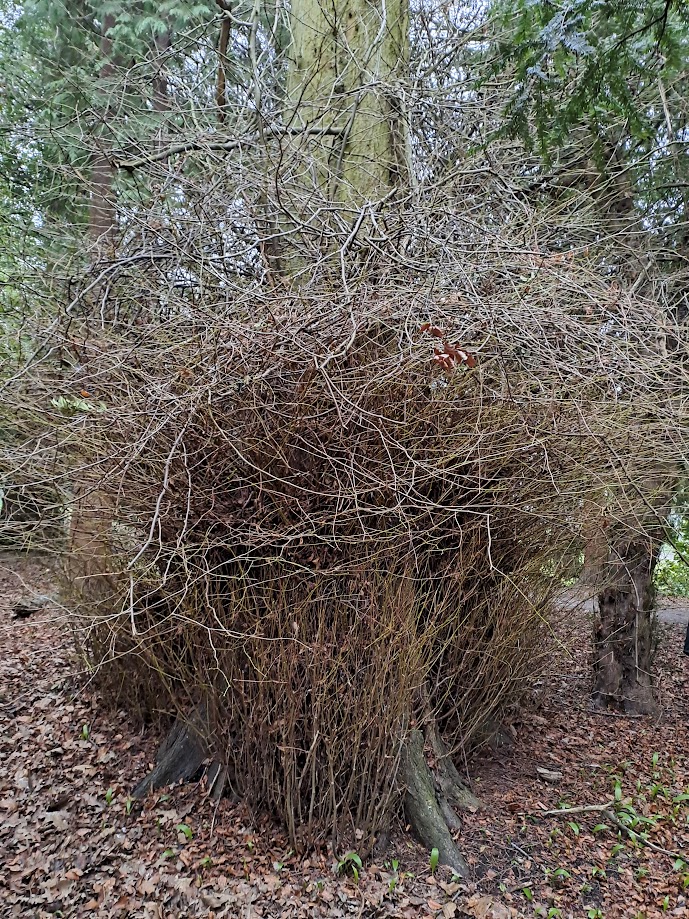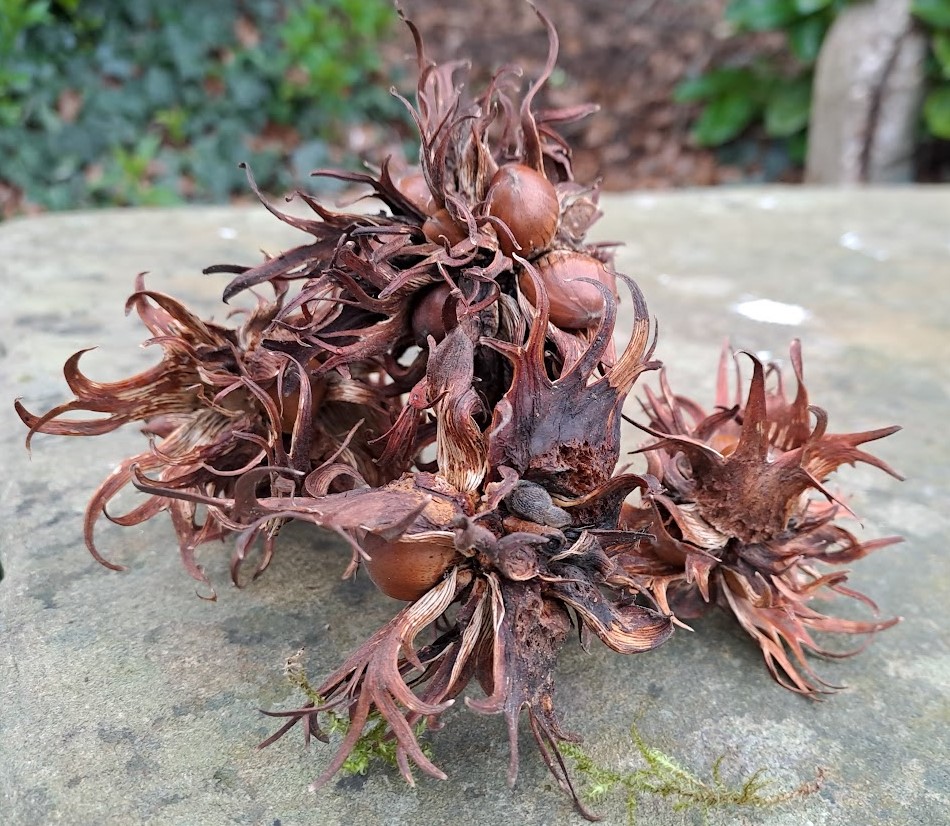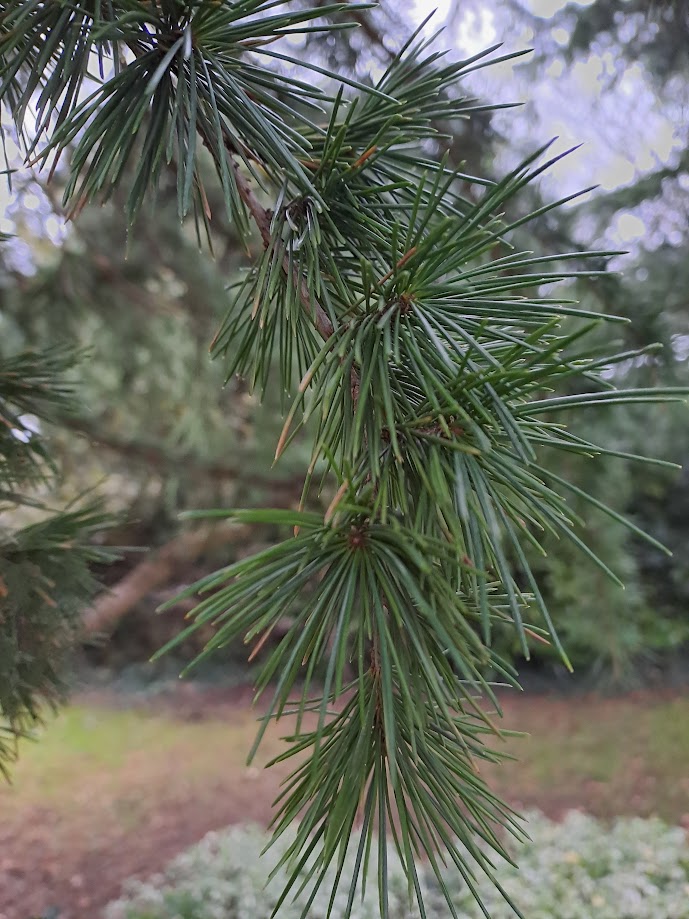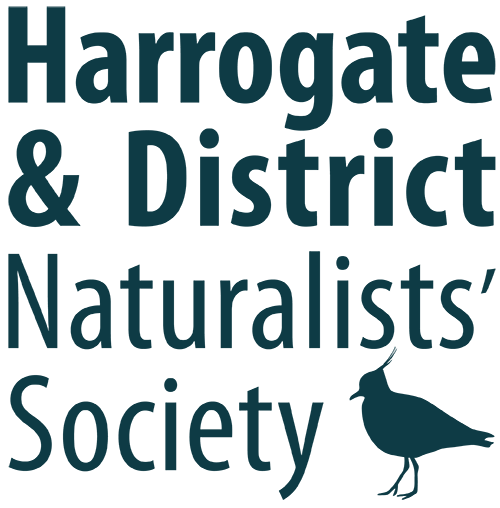The weather forecast for our HDNS outing did not bode well, but happily despite the grey sky, no rain fell. Eighteen of us assembled at Conyngham Hall Car park, Knaresborough. We were led by Sue Wood, Horticultural Development Officer at North Yorkshire Council and by Ewan, the author of the Tree Trail. This trail comprises a map showing both the main trail around the Hall grounds and the trees named and numbered. There is not only a description for each tree but also an interesting history of Conyngham Hall which we were able to download to our phones.
Here is the link to the Tree Trail which includes a pdf link to the map:
Almost at the start of the trail, Sue Wood showed us fruits from the Turkish Hazel, Corylus colurna. We found these on the ground under the tree and they looked very distinctive with the nuts sitting in frilly, bristly cups. Its leaves are apparently more lobed and shinier than the Common Hazel Corylus avellana.
As it happened the trail then led us to some coniferous trees, which we seemed to find fascinating, perhaps because we have only three native species in the UK. We came across a Western Red Cedar Thuja plicata. This is described as a giant tree from North West America, which grows on windswept hillsides where its tops are repeatedly blown down, but the basal trunk can survive for several millennia. On warm days its strong sweet pineapple scent fills the air. ……….. bring it on!
Close to the Red Cedar we found several Giant Sequoia Sequoiadendron giganteum, with their dark red, thickly spongy bark, which proofs the trees against forest fires. We spotted evidence of treecreepers roosting in tiny gaps in the bark.
Another conifer up for inspection was the Monkey Puzzle tree, Araucaria araucana. In the UK this is a popular garden tree, native to central and southern Chile and western Argentina and is the national tree of Chile. Its often horizontal branches are covered in spirals of sharp, triangular leaves. It is instantly recognisable.
Some Cedar trees were spotted en route, so half way round we were treated to some excellent arm waving movements by Sue Wood, who was explaining a useful way to identify cedars by looking at the foliage and remembering ‘Lebanon – arms level; Atlas – arms ascending; Deodar – arms drooping’. However, confusion is still possible!
We then encountered a Maidenhair Tree, Ginkgo biloba, which originates from Chekiang Province in China and is a tree endangered in the wild. Its fan shaped leaves are easy to identify in the summer. The Ginkgo family is very ancient and remote from other trees and plants. It was dominant in the Mesozoic era, but now has only this surviving species.
Towards the end of the trail we walked along ‘Frans Fontaine Row’ comprising Upright Hornbeams with their narrow, columnar shapes. It is understandable why this is a useful tree to plant in restricted areas as it retains its columnar shaped crown.
Overall I believe we encountered more than 40 species of tree, and there are many that I have not even mentioned such as Beech with its cigar shaped buds, Lime with its epicormic ‘bushy’ growth, Sweet Chestnut with its spiralling bark, Horse Chestnut with its leaf scars and upward sweeping branches, Walnut with its silvery grey ridges on its bark, Italian Alder with its cones larger than the Common variety and Yew, one of our three native conifers. So many tree treats! I can thoroughly recommend the Tree Trail and will certainly be returning to the grounds very soon to repeat the exercise.
As we walked along the trail, Andy Woodall, a member of the Wharfedale Naturalists and the Mid-Yorkshire Fungus Group, gave us the benefit of his expertise by showing us some interesting fungi. These included the Holly Speckle, Trochila ilicina, which forms a dark speckling on dead holly leaves, occurring on the upper sides only and breaking down the tough leaves. (A list of these fungi is shown below.)
Our thanks to Sue and Ewan, our leaders, to Kerry and all other organisers of this event, and to all those dedicated stalwarts who turned up to look and learn about the trees around us.
Sonia Starbuck
References
Collins Tree Guide, Own Johnson & David More pub. 2006 HarperCollins
Fungi
Turkeytails Trametes versicolor
Brittle Cinder Kretzschmaria deusta
Ash Dieback Hymenoscyphus fraxineus
Rhododendron Bud Blast Seifertia azaleae
Beechmast Candlesnuff Xylaria carpophila
Holly Speckle, Trochila ilicina
Phacidium lauri Holly Leaf Volcano
Slime Moulds Metatrichia floriformis
